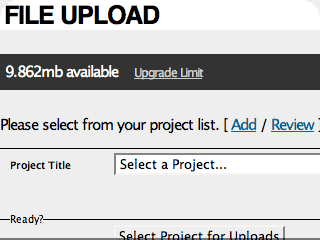
In the December 4, 2006 issue of New York Magazine, the cover story follows burnout, an appropriate term almost everyone can relate to; it’s one of the problems FWD:labs aims to help solve for cinema artists. And no better time than a case when an anti-burnout type of feature is now available for members of FWDlabs.com, to better personalize their work before their public and social audience.
Jennifer Senior relates her article on this specialty of psychology to Wes Anderson’s 1998 film:
Whenever I’ve finished a big project … or whenever I’ve found myself listening to the 10 P.M. whir of vacuum cleaners in our office start for the tenth night in a row, there’s no one I identify more with than the Bill Murray character in Rushmore, particularly as he’s blankly tossing golf balls from a wire basket into his swimming pool.
 The number one most requested feature for the new FWDlabs.com is media uploads, obviously essential for visual communications here. The feature was held and developed to be unique, as much as it can, to artists working in film, web, and design. It’s limited to JPG and PDF uploads, for example; there was no need to enter the pro-bono 320×240 video sharing business.
The number one most requested feature for the new FWDlabs.com is media uploads, obviously essential for visual communications here. The feature was held and developed to be unique, as much as it can, to artists working in film, web, and design. It’s limited to JPG and PDF uploads, for example; there was no need to enter the pro-bono 320×240 video sharing business.
Graham Green’s A Burnt-Out Case, which comes in in the article, begins with a hopeless protagonist, which tends to be a feeling with cinema artists dealing with the web. Instead of accepting that truth, think of the feature building process here as a means for keeping everything organized — you’re sitting down, new to the job, with automatic filters and intuitive suggestions to get you on track from the get-go. So, no more handling web media with a blank stare; let it rip.


Commentary
Commenting on this post is now closed. Please contact us if you have any questions, comments, concerns or ideas.